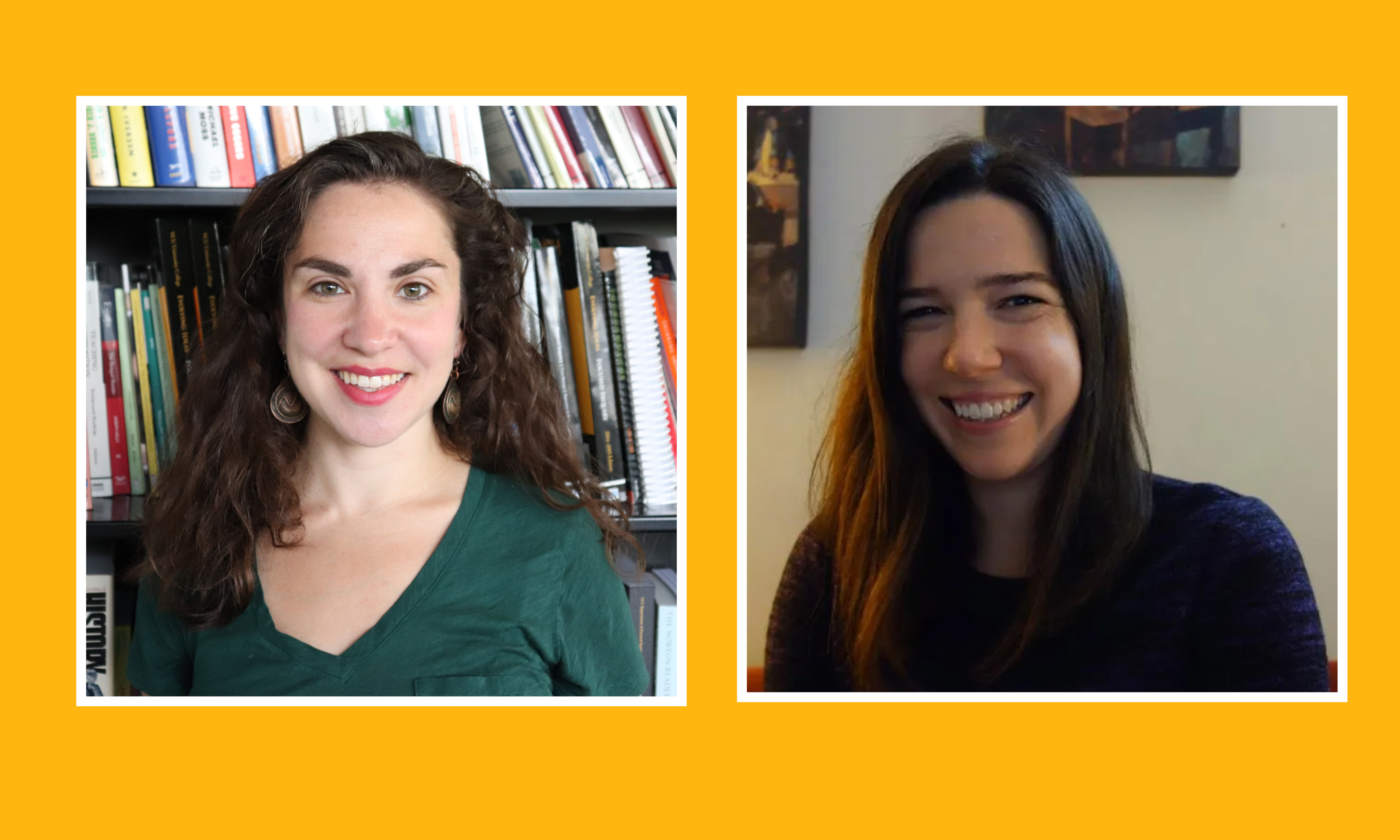Two Focused Inquiry Faculty Help Lead Research Group That Examines Memory, Historical Narratives
By William Lineberry
University College
lineberrywd@vcu.edu
 Two Focused Inquiry faculty members are helping lead an interdisciplinary humanities research group that uses memory studies to examine historical and social events around issues of race, power, physical structures both in Richmond and across the world.
Two Focused Inquiry faculty members are helping lead an interdisciplinary humanities research group that uses memory studies to examine historical and social events around issues of race, power, physical structures both in Richmond and across the world.
Hilary Levinson, Ph.D., and Katie Logan, Ph.D. helped create “Memory and Monuments,” which is a research group based out of the Humanities Research Center at Virginia Commonwealth University. The goal of the HRC is to “foster conversation and creativity across conventional disciplinary boundaries by bringing together faculty and graduate students from different departments with common interests.”
Levinson and Logan, who both share a research background in comparative literature and memory studies, helped found the group (along with colleagues in the School of World Studies, the School of Education and the College of Humanities and Sciences) after collaborating between themselves within Focused Inquiry and providing feedback on various writing and research projects to one another.
“We loved what we were doing [between Hilary and me], but we wanted to see what it could look like more broadly at the university level,” Logan said. “After taking it out to the broad university, and finding the HRC as a home for this, we got really fortunate.”
Logan and Levinson, along with other faculty within the research group, wanted to carve out a place for those interested in examining memory and what goes into how and what we remember and the narratives around those ideas.
“Memory studies is a really political space that does a lot of work to think about, marshal or revise narratives around the past to accomplish goals in the present,” Logan said. “It’s always trying to undermine this sense that memory and the past are these fixed things.”
Memory studies is a really political space that does a lot of work to think about, marshal or revise narratives around the past to accomplish goals in the present.
Levinson added that memory studies also affords scholars the opportunity to examine voices that have been historically left out of narratives created by large—oftentimes government or educational—entities.
“Where can we go to hear the voices that have been, whether purposefully or institutionally, excluded?” Levinson said. “I have often gone to literature to find those voices to make more complex what we understand about history—particularly during moments of political crisis.”
It is when these voices are found, and contextualized within the existing narrative, that a bigger and more inclusive picture can begin to be constructed. What makes the research group special is the ability to seek these voices out using an interdisciplinary approach, Logan and Levinson said.
Interdisciplinary Lens
It is the ability to bring their projects and work to the interdisciplinary research group that makes Memory and Monuments a special place for collaboration, Logan and Levinson said. The inherent interdisciplinary nature of the group allows for feedback from a variety of perspectives when members are trying to fine tune research projects, class assignments and other projects.
One significant realization that Logan said she encountered working within the group was that all its members, regardless of discipline, were approaching similar questions with their work.
“The sense of recognizing that people [within the research group] who are working in education, anthropology, religious studies, comparative literature and political science are all asking similar questions about power, community formation, narrative structure and excluded voices is so energizing,” Logan said.
Levinson added that within Focused Inquiry one area of emphasis is the ability to transfer knowledge and skills to a variety of subjects. Working within the Memory and Monuments research group has given her the ability to see her colleagues’ methodologies and to then, in turn, bring those into her Focused Inquiry courses, she said.
“For me as an instructor, getting to see how these different kinds of methodologies play out within the research group makes it really exciting for me to then take that back to my students,” Levinson said.
The research group’s interdisciplinarity has served a reminder to Levinson to encourage her students to approach texts using the methodology they are most comfortable with, whether that be qualitative or quantitative.
Memory and Monuments recently received a 5x5 Collaborative Grant from the HRC that will allow the project to begin to consider alternative formats for publishing some of the work the group produces, Levinson and Logan said. As the research group continues its work, one goal that both Logan and Levinson said they hope can be accomplished through is to help further solidify memory studies as a meaningful and impactful research area on VCU’s campus.
“I hope that the work we’re doing in memory studies and the work that the HRC is doing–as a whole– will be seen as continuing to make VCU a home for really rich humanities work even as it is trying to invest in the sciences in meaningful ways, too.”